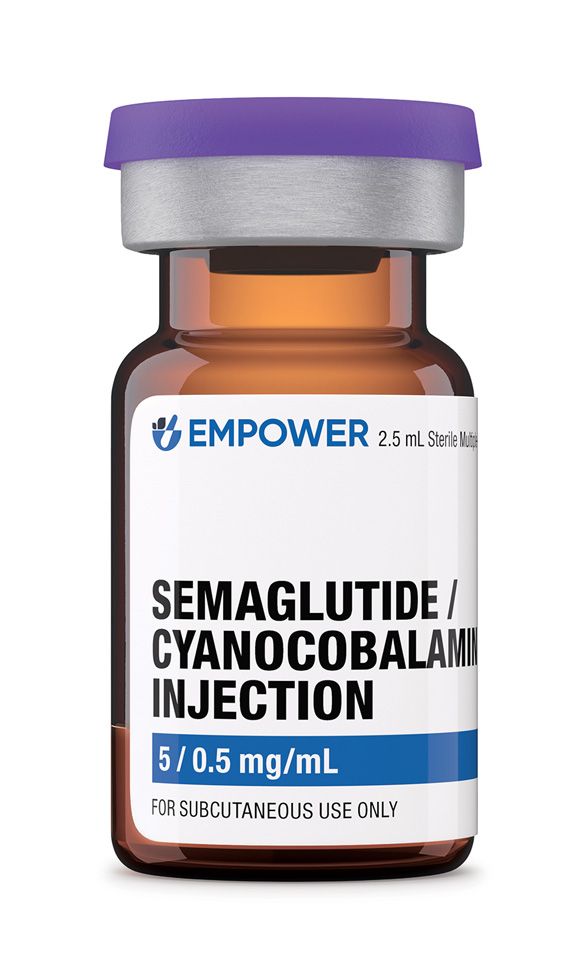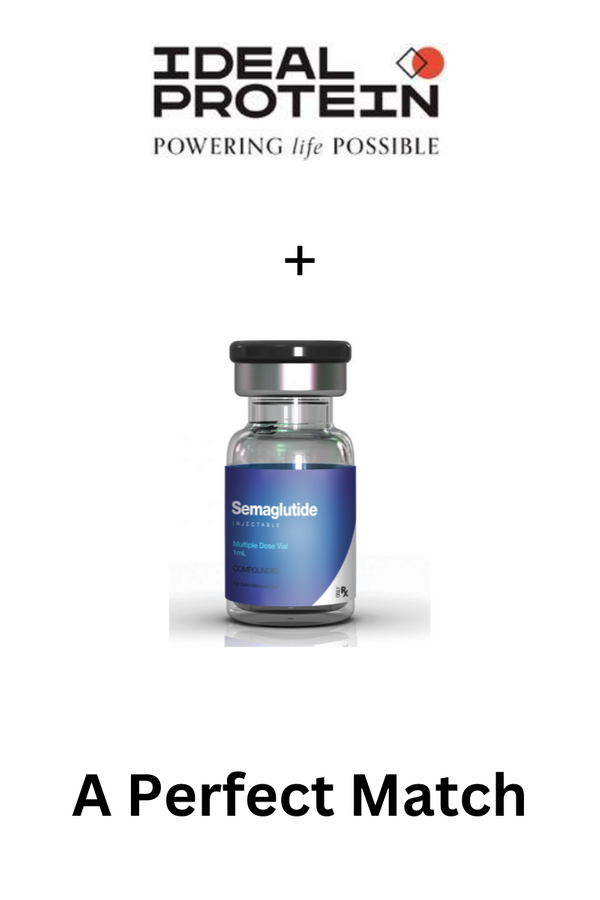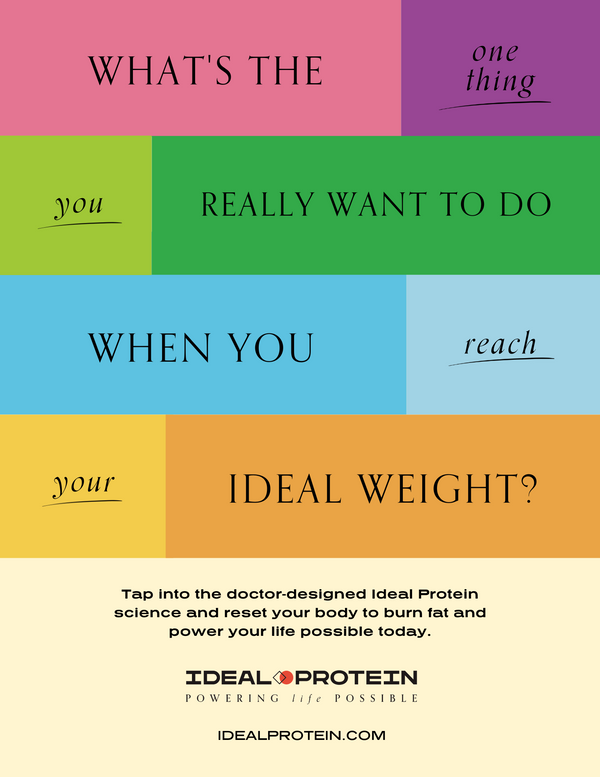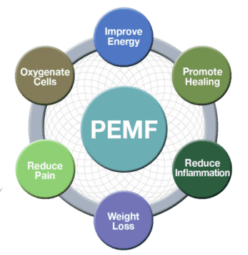Blog
Understanding Semaglutide: A Game-Changer for Weight Loss and Diabetes Management
In recent years, semaglutide has gained significant attention in the medical community for its effectiveness in managing type 2 diabetes and aiding weight loss. If you’ve been looking for a way to improve your health, semaglutide may be a viable option. Here’s what you need to know.
What Is Semaglutide?
Semaglutide is a GLP-1 receptor agonist, a class of medications that mimic the hormone glucagon-like peptide-1 (GLP-1). This hormone plays a key role in regulating blood sugar levels and appetite. Semaglutide is available under brand names like Ozempic® (for diabetes) and Wegovy® (for weight loss).
How Does Semaglutide Work?
Semaglutide works by:
Regulating blood sugar levels: It stimulates insulin release and reduces glucose production in the liver, helping to maintain balanced blood sugar levels.
Suppressing appetite: By affecting the brain’s hunger centers, it helps reduce food intake and cravings, which supports weight loss.
Slowing digestion: This leads to prolonged feelings of fullness, reducing the likelihood of overeating.
Who Can Benefit from Semaglutide?
Semaglutide is FDA-approved for:
moreIdeal Protein and Semaglutide- A Perfect Match !
The Ideal Protein diet and semaglutide are two weight loss solutions that can be combined for even greater benefits. The Ideal Protein diet focuses on reducing carbohydrate intake and increasing protein intake, while semaglutide is a medication that mimics the activity of a hormone called GLP-1 to help reduce hunger and food intake.
When used together, the Ideal Protein diet and semaglutide can have several benefits:
Greater weight loss: Combining the Ideal Protein diet with semaglutide can lead to greater weight loss than either option alone. The Ideal Protein diet can help reduce calorie intake and promote fat loss, while semaglutide can help reduce hunger and food cravings.
Improved blood sugar control: Semaglutide is originally a medication developed to treat type 2 diabetes, and the Ideal Protein diet can also help improve blood sugar control by reducing carbohydrate intake. By using both together, blood sugar control can be further optimized, which is especially beneficial for those with diabetes or pre-diabetes.
Reduced inflammation: The Ideal Protein diet can help reduce inflammation in the body by reducing carbohydrate intake and promoting fat loss. Semaglutide has also been shown to have anti-inflammatory effects. When used together, they can further reduce inflammation and improve overall health.
more
Weight Loss- Maintaining Motivation
Maintaining motivation and the right mindset is crucial for successful weight loss. Here are some tips and strategies to help you stay on track:
Set realistic goals: When setting weight loss goals, it's important to be realistic and set achievable targets. Unrealistic goals can lead to frustration and loss of motivation. Break your goals down into smaller, achievable milestones, and celebrate your achievements along the way.
Find your why: Understanding why you want to lose weight is important for motivation. Whether it's to improve your health, feel more confident, or improve your overall quality of life, identifying your reasons for wanting to lose weight can help you stay motivated when things get tough.
Create a support system: Having a support system can make all the difference when it comes to motivation. Find people who will encourage and support you on your weight loss journey, whether it's friends, family, or a weight loss group.
Focus on the positives: Instead of dwelling on setbacks or mistakes, focus on the positive changes you're making in your life. Celebrate small successes, such as losing a few pounds or fitting into a smaller size.
more
Managing Stress
Pheelings Media S.L./Bigstock.com
Stress is one of the body’s natural defenses. It activates our ‘fight or flight’ mechanism whereby our body prepares to confront a danger or retreat to safety. During a stress response, the body produces larger than normal quantities of certain chemicals that improve a person’s ability to respond to a potentially hazardous or challenging situation. When we feel stressed, blood pressure and pulse rate rise and muscles become more tense. Some other bodily functions such as digestion and immune response slow to conserve energy for the ‘fight or flight.’
So although some stress can be motivating, it can become a problem when the body is in a constant state of stress. Chronic stress makes it difficult for the body to return to a normal level of stress hormone activity. That results in adverse effects on the cardiovascular, respiratory, digestive and immune systems. So what can we do to manage our stress?
Here are some tips:
- Prioritize Sleep
- Maintain a Nutritious Diet
- Exercise Daily
- Rely on a Support Network
- Improve Time Management Skills
- Meditate
Grains For Low Carb Diets
The popularity of low carbohydrate diets seems understandable since research shows that a low-carb diet can be effective for weight loss. This type of diet helps stabilize blood sugar levels and ultimately drops the body’s levels of insulin, a fat-storing hormone. This helps to explain why many type 2 diabetics are often encouraged to follow a low-carb diet. Generally speaking, a low-carb diet means restricting most grains. So, are there any low-carb grains that do not have to be off limits?
One of the first distinctions to be made here is the difference between whole and refined (processed) grains. Whole grains contain all three original parts, the bran, germ and endosperm, intact as when the grains were harvested. They retain all their nutrients and most importantly, are a good source of fiber. Refined grains are grains that are not whole, because they are missing one or more of their three key parts (bran, germ or endosperm). Refining a grain removes about a quarter of the protein in a grain, and half to two thirds or more of many nutrients, leaving the grain a mere shadow of its original self. Most refined grains contain little to no fiber.
moreWhat is PEMF and How Can It Help You
PEMF stands for Pulsed Electro-Magnetic Field therapy; using this process involves delivering pulsed energy waves towards the damaged or injured areas of the body. These waves pass painlessly and quickly to the damaged cells in whatever area of the body is being treated.
As you probably know our body is made up of many cells. When an injury or disease process happens, the cells are what get damaged and “sick”. When a cell becomes sick its energy reduces and this reduction causes a disruption in the normal cell metabolism and if our cells are not healthy then neither is our body.
Perhaps the easiest way to understand PEMF is to think your cells as a battery. A strong healthy cell is full charged. Your cell, like a battery can lose its energy whether due to age, disease, stress or overuse. PEMF serves to recharge your cells and promote healing.
moreAll About Vitamin C
Vitamin C, also known as ascorbic acid, is an essential nutrient. Our bodies don’t produce Vitamin C so we need to get it from our diet. A deficiency of Vitamin C can cause symptoms such as fatigue, irritability and weight loss. Severe deficiency can result in a disease called scurvy (though such a diagnosis is rare in this modern era).
So, we know Vitamin C is good for us. But do you know the many ways in which Vitamin C supports optimal health? Here are some benefits of maintaining a healthy level of Vitamin C:
Vitamin C supports metabolism.
Our bodies need vitamin C in order to efficiently convert the food and drink we consume into energy. It also helps us to absorb other vitamins, minerals and other micronutrients to keep our bodies functioning at a high level.
Vitamin C supports the immune system.
Our immune system is responsible for keeping us healthy. When our immune system is strong, we are more able to ward off illness and stay healthy.
Vitamin C helps maintain bones and cartilage.
moreNew Year, Better Health
The start of a new year may have you resolving to make positive changes to your lifestyle. The first step toward change is awareness and once you are aware of behaviors that can have a big impact, you’re on the road to success. Try following these four simple tips to improve your health this year.
Get Moving. There is good reason why doctors say “sitting is the new smoking.” Being sedentary can increase the risk of certain cancers and cardiovascular diseases and even contribute to anxiety and depression. To reduce those dangers, try to exercise 3-4 times each week. Additionally, incorporate small changes into your routine such as parking at the far end of the lot, taking the stairs instead of the elevator, standing while talking on the phone, taking a walk during lunch breaks and investing in a stand-up desk.
Get Enough Sleep. How much sleep are you getting each night? If you are not getting at least 7 hours, you may be setting yourself up for a host of problems. Lack of sleep not only leaves you feeling fatigued but it can lead to depression, weight gain, high blood pressure and heart disease. To improve the quality of your sleep, go to bed at the same time every night. Be sure to avoid caffeinated drinks after 3:00 in the afternoon. And lastly, limit screen time in the hour leading up to bedtime.
moreStay Hydrated
Did you know that our bodies are made up of about 60% water? Our blood itself is about 90% water. Our bodily systems are basically created with water and water is the medium for many different reactions that occur in our body. This is why it is crucial for health and well-being that we are drinking plenty of water every day.
Some of the benefits of good hydration are:
- Helps optimize physical performance
- Affects energy levels and brain function
- Supports kidney health
- Boosts skin health
- Aids digestion
- Helps you lose weight
Everyone’s hydration levels vary, but a good goal to aim for is 64-ounces a day. Your activity level, your metabolism and your size should all be considered into this number as well. Some people naturally require more water than that, while others a bit less. Some warning signs that you are not getting enough water include dry mouth, dry skin, dry eyes, joint pain, decrease in muscle mass, fatigue, headaches, and constipation.
moreImportance of Good Posture
As technology has become ever more pervasive in our daily lives, we spend countless hours looking at various devices. Many spend 40 or more hours a week sitting at a desk. Is it any wonder that many of us suffer from poor posture?
Poor posture leads to back pain, neck pain, shoulder pain, headaches and decreased flexibility. Poor posture contributes to spinal degeneration, it affects balance and can even contribute to digestive issues.
Good posture means keeping our bodies in correct alignment. By maintaining good alignment, muscles are being used properly and most efficiently. That efficiency can prevent fatigue because the body is using less energy. Good posture can improve circulation, which makes breathing easier. And, beyond helping us avoid body aches and pains associated with poor posture, good posture projects an image of confidence and helps us appear younger and slimmer!
So, how can we improve posture? The most important step to improving posture is to be mindful of it. It may even be helpful to set a periodic alarm on your phone to remind you to do a posture check. While sitting at a desk, keep both feet flat on the floor. Don’t cross your legs and keep the shoulders relaxed. Consider the ergonomics of your work station. Make sure that your chair is the right height in relation to your desk. Raise your computer monitor so that you do not have to tilt your head downward to view the screen. While standing, keep your shoulders back and pull your stomach in. Make yourself as tall as possible!
moreWays To Reduce Exposure to EDCs
Kostikova Natalia/Bigstock.com
One of the best ways to limit your exposure to EDCs is to limit your use of plastics. Plastics are a pervasive and widespread source of exposure and they can contain and leach these hazardous chemicals.
Endocrine-Disrupting Chemicals (EDCs) can be found in a variety of consumer products like food packaging, cosmetics, personal care products, children’s toys and furniture. These chemicals interfere with the body’s hormonal system. Some EDCs mimic our hormones and fool the body into thinking that they are real hormones, while other EDCs block natural hormones from doing their job. Some EDCs can raise or lower the levels of hormones in the blood by affecting how they are made, broken down, or stored in the body. Lastly, some EDCs can change how sensitive the body is to different hormones.
By disrupting the body’s intricate hormone systems, EDCs can cause cancer, diabetes, immune and reproductive disorders, and neurological impairments of developing fetuses and children. Even low doses of EDCs may be unsafe. Children and babies are particularly vulnerable to the effects of these compounds because their bodies are still developing.
moreSleeping Well?
Sleeping well makes us feel better, more alert, energetic, and better able to concentrate and perform our daily tasks. Getting enough sleep each day is one of the most important things you can do for your health and well-being. When you sleep, your body:
- repairs muscles
- grows bones
- manages hormones
- sorts memories
When you get the necessary amount of sleep, you are helping to boost your immune system, keep off extra pounds, improve your mood and improve your productivity.
Sleep is divided into different periods of light and deep sleep throughout the night. These occur in cycles of about 90 minutes. Each cycle includes periods of non-REM sleep, ranging from light to deep sleep, and REM (Rapid Eye Movement) sleep when our brains are more active and dreams occur.
Stage one, or the phase between being awake and asleep, is considered light sleep. Deeper sleep begins in stage two, as your breathing and heart rate become slower and your body temperature drops.
Stage three is the deepest and most restorative stage of sleep (it’s also called “slow-wave sleep”), in which breathing continues to slow, blood pressure drops, muscles relax, and tissue growth and repair occurs.
moreReduce Preservatives in Your Diet
Preservatives are crucial to the preservation, safety, and freshness of the foods in the food supply system. They are added to food to prevent spoiling and to maintain nutritional value. There are two types of food preservatives, natural and artificial. Natural preservatives, such as oil and salt, don’t alter the chemical composition of the food and are full of antioxidants, helping to delay the process of aging or oxidation. Curing and freezing are two methods of natural preservation.
Artificial preservatives are artificially produced and also synthetic in nature. There are three categories of chemical preservatives commonly used in foods:
- Benzoates (like sodium benzoate)
- Nitrites (like sodium nitrite)
- Sulphites (like sulphur dioxide)
While preservatives prolong the shelf-life of food by preventing their spoilage, regular consumption of these chemical additives can cause serious health hazards such as hypersensitivity, allergy, asthma, hyperactivity, neurological damage, and weight gain.
If you are looking to limit the amount of preservatives in the foods you eat, follow these tips:
moreWhat is Lactic Acid?
The human body prefers to generate most of its energy using aerobic methods, meaning with oxygen. The oxygen helps to convert glucose into energy. Some circumstances, however, require energy production faster than our bodies can adequately deliver oxygen. In those instances, the working muscles generate energy anaerobically. The body produces lactic acid when it is lacking in the oxygen it needs to convert glucose into energy. The lactic acid allows glucose breakdown—and thus energy production—to continue.
People often experience high levels of lactic acid during or following strenuous exercise. This is called exercise-induced or exercise-related hyperlactatemia.
Lactic acid buildup can result in muscle pain, cramps, and muscular fatigue. A buildup of lactic acid in the muscles during or following exercise is usually not harmful. In fact, some experts believe it can be beneficial. In small amounts, lactic acid can:
- help the body absorb energy
- help the body burn calories
- increase endurance levels
However, a lot of people find that the muscle pain and cramps from lactic acid buildup can negatively affect their workouts. To combat the unpleasant effects of lactic acid buildup, be sure to stay well-hydrated, take more breaks or decrease your exercise intensity.
moreDetox Your Home
Many of us have done a juice cleanse in order to eliminate internal toxins from our body, but how many of us do anything about the toxins in our own homes? Common household products are increasingly being found to have negative health effects on the nervous and immune systems, on our reproductive systems and on our endocrine, cardiovascular and respiratory systems.
The average home may contain as many as 400 or more harmful chemicals, a lot of which we are unable to see, smell or taste. These chemicals may be tolerated in small doses, but problems can occur when we are exposed in broader ways; everyone’s tolerance level is different depending on genetics, nutritional status and previous contacts with many chemicals. Taking time to pay attention and reduce our exposure to internal and external toxins by detoxing our surroundings can permit our body’s own detoxification process to function more efficiently.
Here are some simple tips to begin creating a healthier home environment:
- Leave the shoes outside. Not only dirt, but germs, pesticides and other contaminants can hitch a ride on the bottom of your shoes and pollute your surroundings.
- Open the windows. Our well-insulated homes trap stale, unhealthy air inside. Whenever possible, open the windows to encourage circulation of fresh air.
- Hand wash clothes instead of dry cleaning. Chemicals used in dry cleaning have been linked to cancer. If there’s an item you must dry clean, remove it from the plastic wrap and hang it outside to let it air out before wearing it or putting it in your closet.
- Choose green cleaning products. Make your own non-toxic cleaners with everyday ingredients, like vinegar, baking soda and lemon.
- Cultivate house plants. Houseplants such as ivy and peace lilies have a natural ability to clean air, removing pollutants, such as formaldehyde, benzene, trichloroethylene and carbon monoxide. Adding plants will improve the air quality of your home.
Mix It Up For Health!
When it comes to working out, a lot of us are creatures of habit. We head for the same pilates class, do the same circuit while weight training, or run the same route each time we lace up our running shoes. Of course, regular exercise is good for you, but mixing up your fitness routine can provide extra benefits.
Here are three reasons why you should consider varying your workouts:
Prevent Overuse Injuries
When you do the same exercise every day, you risk suffering from repetitive stress injuries. These are a gradual buildup of damage to muscles, tendons, and nerves from repetitive motions. When you mix up your workouts, you give those overused muscles, joints, and ligaments a chance to rest and recover before putting them into action again. And if you do get hurt, doing an alternative workout that doesn’t stress the same part of the body can allow you to stay in shape and heal at the same time.
Avoid Workout Boredom
If you are always doing the same exercise routine, even the most devoted can get bored. Changing up your workout keeps things from getting stale. Taking a challenging hike instead of hopping on the stairmaster at the gym can help maintain motivation and enthusiasm.
moreAre You Getting Enough Vitamin D?
A large percentage of Americans are found to be deficient in Vitamin D. It’s an incredibly important vitamin yet it can be hard to obtain through just diet alone and is reliant on regular sun exposure. We need vitamin D to help the body absorb calcium and phosphate from our diet. Vitamin D has many roles in the body. It helps to:
- promote healthy bones and teeth
- support immune, brain, and nervous system health
- regulate insulin levels to support diabetes management
- support lung function and cardiovascular health
- influence the expression of genes for prevention of cancers
Vitamin D is sometimes referred to as the sunshine vitamin. This is because vitamin D is produced by the body in response to sun exposure. Spending about 15-20 minutes in the sun, three days per week, can allow a body to produce sufficient vitamin D. This can vary depending on how fair-skinned you are. Darker skinned people with more melanin will need more sun exposure. Other factors, such as smog and even the time of year, can also affect how much UVB rays are present. In addition, due to the very real concerns surrounding skin cancer, many people avoid sun exposure.
moreIs Yoga Right For You?
Yoga is a spiritual discipline based on an extremely subtle science which focuses on bringing harmony between mind and body. It is an art and science of healthy living. The word ‘yoga’ is derived from the Sanskrit word meaning ‘to join’ or ‘to yoke’ or ‘to unite.’
When considering modern day yoga, most of us think of the physical practice of asana, a series of postures often weaved together. Asana practice combines physical exercises, mental meditation, and breathing techniques. It is generally intended to build strength and stamina, to improve flexibility, coordination, balance and to relax the body.
Yoga is also used as a therapeutic tool for many physical and mental conditions, and mind-body research is now demonstrating its effectiveness as a treatment for chronic pain, anxiety, depression, cardiovascular disease and diabetes, to name but a few.
Indeed, clinical and psychological studies have demonstrated that performing yoga has the following benefits:
- Physical postures strengthen and tone muscles and when performed in rapid succession, can provide cardiovascular conditioning.
- Meditation and deep breathing can reduce stress, thereby lowering blood pressure and inducing relaxation.
- Mind-body awareness can influence mood and self-esteem to improve quality of life.
Heat and Ice
Ever wondered if you should ice that sprain or use a heat pack instead? Treating pain with hot and cold can be very effective for a lot of different conditions and injuries; and it’s very accessible and affordable. The tricky part is knowing when to use heat and when to use cold. Sometimes a single treatment will even include both. As a general rule, use ICE for acute injuries or pain and for inflammation and swelling. Use HEAT for muscle pain or stiffness.
Ice therapy works as a vasoconstrictor. It causes the blood vessels to contract and reduce circulation, therefore decreasing pain and also reducing inflammation.
Heat therapy works in the opposite manner. It is a vasodilator. It increases circulation by expanding the blood vessels. This can reduce stiffness and relieve cramping or aching muscles. Heat also draws nutrients (via the blood) to the injured area, which aids in the healing process, and also helps the body’s cells get rid of waste products, such as lactic acid. Unlike ice, heat can make inflammation worse.
But what about using both together? This technique is known as contrast therapy, and involves alternating applications of heat and ice to relieve the pain associated with injury or overexertion. Arthritic patients, for example, may use heat for joint stiffness and cold for swelling and acute pain.
moreForms of Added Sugar
Added sugar provides “empty” calories with no nutritional value. Eating too much sugar is linked to weight gain and various diseases like obesity, type 2 diabetes, tooth decay and heart disease.
It’s important to make the distinction between added sugars and sugars that occur naturally in foods like fruits and vegetables – these are healthy foods that contain water, fiber and various micronutrients. Naturally occurring sugars are absolutely fine, but the same does not apply to added sugar. There is absolutely no nutritional need or benefit that comes from eating added sugar.
According to American Heart Association guidelines, most men should consume no more than 150 calories of added sugar per day. This is equivalent to 38 grams or 9 teaspoons of sugar. Women should have no more than 100 calories of added sugar per day. This is around 25 grams or 6 teaspoons of sugar.
Determining how to avoid unnecessary added sugar can be tricky because added sugar has many different names on nutrition labels. Here are some of the other terms for added sugar:
- anhydrous dextrose
- brown sugar
- cane sugar
- corn syrup
- crystal dextrose
- high-fructose corn syrup
- malt syrup
- sucrose
All About Metabolism
We all have a friend who can eat or drink whatever they want and never gain an ounce. Some, on the other hand, can’t even look at a piece of cake without gaining five pounds. No fair! What gives? It’s the differences in metabolism. How fast your metabolism functions is determined mostly by your genes. However, age can also affect metabolism, often slowing as we get older.
What exactly is metabolism? It is the range of chemical processes in the body that convert what we eat and drink into the energy we need to survive. We need that energy to function: to breathe, to circulate blood, to grow and repair cells, among other things.
So, what can we do to raise our metabolism if it has become sluggish? Try these suggestions to rev up your engine.
Eat More Protein. Protein is made up mostly of amino acids which are harder for our bodies to break down, thus requiring more energy to process (the high “thermic effect”). This can raise your metabolic rate by 15-25% compared to your body’s reaction when processing other types of food.
Pump More Iron. Weight training is a great way to boost metabolism. Muscles burn more calories than fat, even at rest. So, grab those dumbbells and start building more lean muscle tissue.
more






















